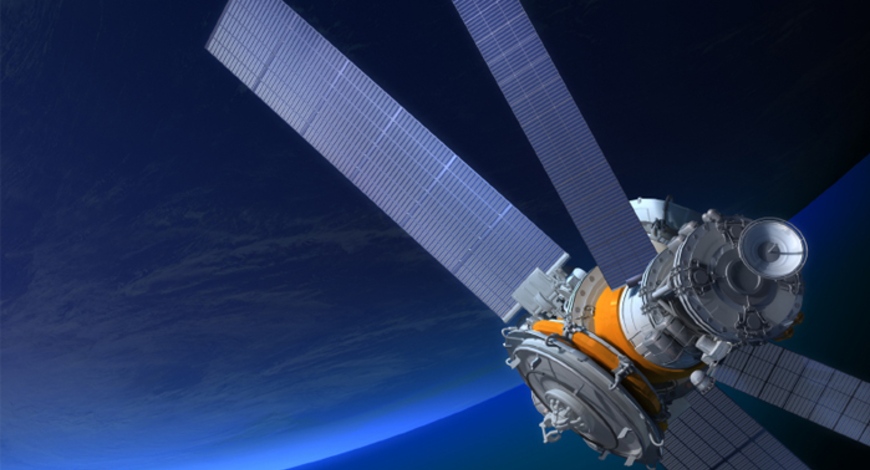Trends
Satellite machine-to-machine (M2M) communications markets

The “Satellite Machine-to-Machine (M2M) Communications – Global Market Trajectory & Analytics” report has been added to ResearchAndMarkets.com’s offering.
Amid the COVID-19 crisis, the global market for Satellite Machine-to-Machine (M2M) Communications estimated at US$2 Billion in the year 2020, is projected to reach a revised size of US$4.1 Billion by 2026, growing at a CAGR of 12.7% over the analysis period.
Satellite Telemetry, one of the segments analyzed in the report, is projected to grow at a 12.4% CAGR to reach US$1.8 Billion by the end of the analysis period. After a thorough analysis of the business implications of the pandemic and its induced economic crisis, growth in the Automatic Identification System (AIS) segment is readjusted to a revised 11.7% CAGR for the next 7-year period. This segment currently accounts for a 33.3% share of the global Satellite Machine-to-Machine (M2M) Communications market.
Satellite M2M communication involves the use of a worldwide network of low-earth orbit (LEO) along with associated ground infrastructure, which enables access to services from any global location. Growing acceptance and popularity of satellite based network connectivity for establishing machine to machine communications in a range of end-use markets will drive strong growth in satellite M2M connections across the globe in coming years.
For instance, Satellite M2M is widely used in the freight and public transportation sectors for automatically tracking/monitoring moving vehicles, tracking/monitoring logistical assets in transit, and coordinating/managing fleet etc. from remote location with little or no human intervention. The adoption of satellite M2M has also been widespread over the years in military/defense sector where they are used for wide ranging applications, including for tracking combat assets; enabling security & surveillance at unmanned areas etc.
Satellite M2M is also being widely used for information exchange, digitalization and automation of work, remote monitoring of process environment or capital equipment, and machine control among other applications in industrial segment, particularly those with remote or unmanned working environments such as in oil & gas, mining, utilities etc.
Corporate and government organizations are also using satellite M2M for remotely monitoring and tracking large number of assets and equipment at fixed locations across geographical areas with minimal or without human intervention. Satellite M2M also finds widespread use for telemetry and scientific monitoring applications in various end-use segments.
The U.S. Market is Estimated at $836.6 Million in 2021, While China is Forecast to Reach $546 Million by 2026
The Satellite Machine-to-Machine (M2M) Communications market in the U.S. is estimated at US$836.6 Million in the year 2021. The country currently accounts for a 37.98% share in the global market. China, the world`s second largest economy, is forecast to reach an estimated market size of US$546 Million in the year 2026 trailing a CAGR of 15.4% through the analysis period. Among the other noteworthy geographic markets are Japan and Canada, each forecast to grow at 10.3% and 11.5% respectively over the analysis period.
Within Europe, Germany is forecast to grow at approximately 12.5% CAGR while Rest of European market (as defined in the study) will reach US$634 Million by the end of the analysis period. The United States and Europe constitute the key revenue generators through the approaching years. Representing the foremost propagators of the satellite technology, putting efforts in developing, launching and utilizing the world`s first satellites in 1950s and 1960s, the two regions continue to expand their satellite capabilities in the 21st century as well.
Different types of satellite-based services such as consumer services, fixed services, mobile voice & data services, and remote sensing services are widely available in the US and Europe. Satellite services domain is gathering further momentum in these regions amid proliferation of new generation technologies such as Internet of Things (IoT).
Very Small Aperture Terminal (VSAT) Segment to Reach $1.2 Billion by 2026
In the global Very Small Aperture Terminal (VSAT) segment, USA, Canada, Japan, China and Europe will drive the 13.9% CAGR estimated for this segment. These regional markets accounting for a combined market size of US$484.1 Million in the year 2020 will reach a projected size of US$1.2 Billion by the close of the analysis period. China will remain among the fastest growing in this cluster of regional markets. Led by countries such as Australia, India, and South Korea, the market in Asia-Pacific is forecast to reach US$110.5 Million by the year 2026. Business Wire






You must be logged in to post a comment Login